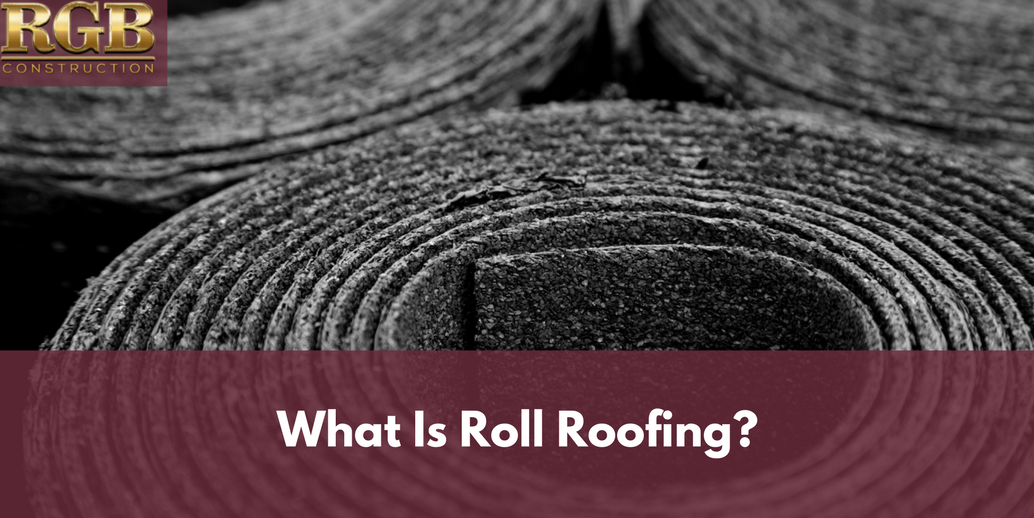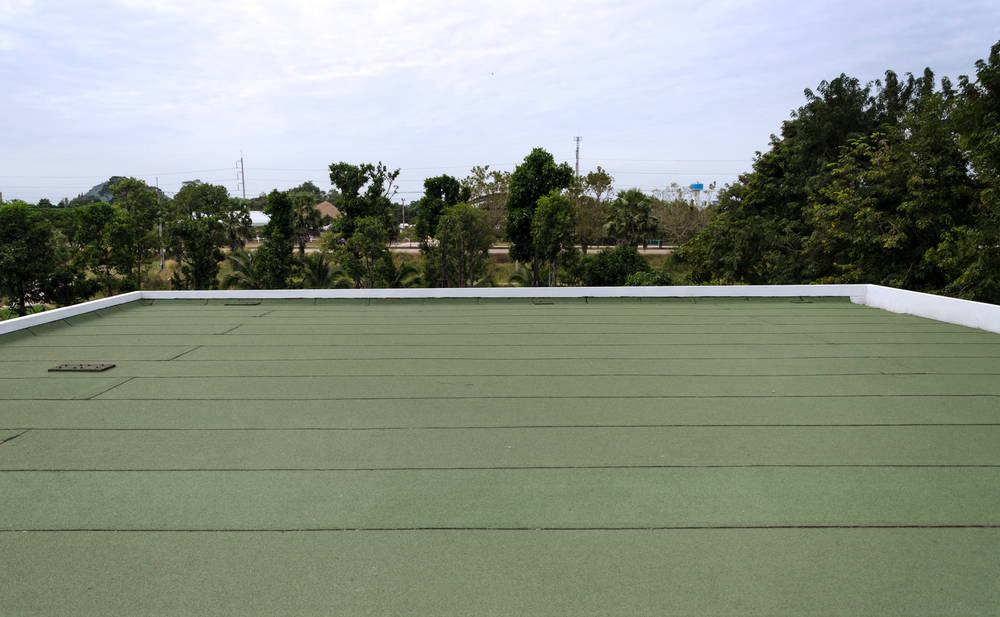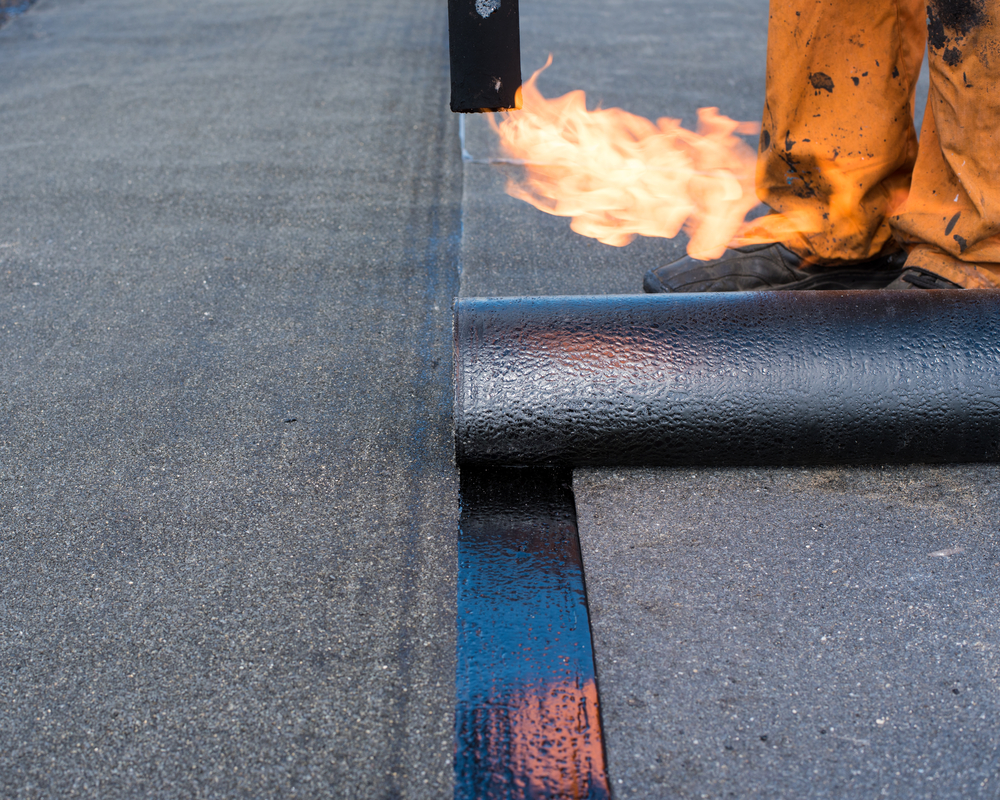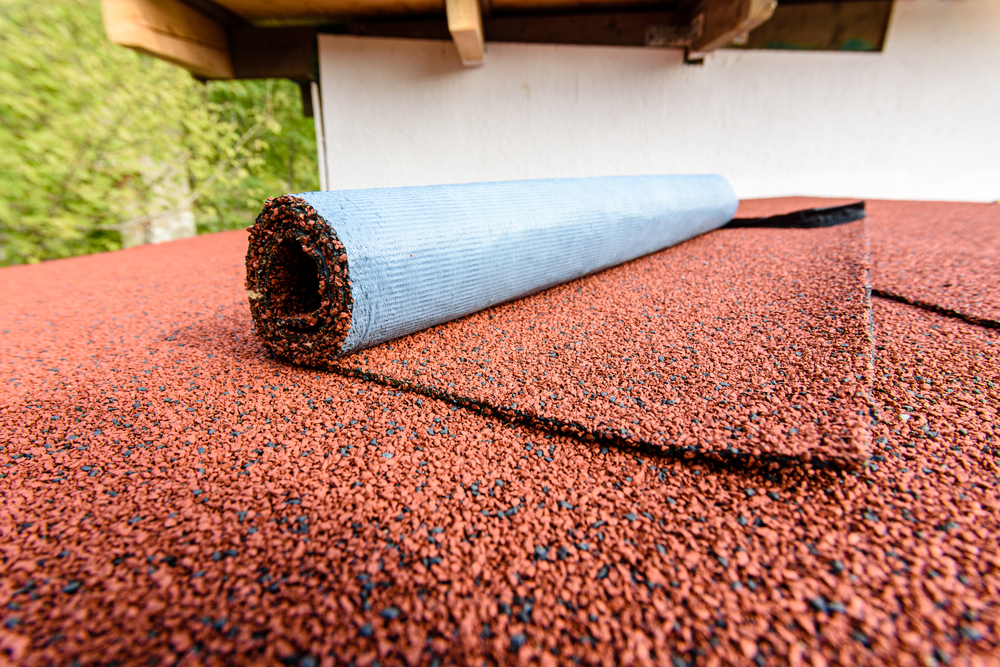If you are looking at the roofing projects around your home that either need to be initiated or finished, but you are not ready to go full steam ahead with the cost of typical shingle materials and the added expense of a contractor, you may want to research less expensive options for re-roofing. Roll roofing is one alternative, but you probably need to investigate it before you think about going the do-it-yourself route with preparation and installation, as it just might not be that easy.
Rolled roofing isn’t exactly like laying a piece of sheet linoleum, so before you buy infinite rolls of it, research the advantages and disadvantages of the product and determine whether it is something that you want to pursue.
So, what is Roll Roofing?
Rolled roofing (MSR) is a mineral surfaced oil-based asphalt product that is available in 100 square feet rolls and weighs about 75 pounds per roll. It can be found in almost any home improvement outlet, hardware store or online source. Though roll roofing is similar to asphalt shingles, it is considerably cheaper, thinner and less durable.
https://www.gaf.com/en-us/products/mineral-guard-residential-roll-roofing
Application
Some homeowners choose to apply MSR on their home rooftops, and those that do can use it to re-roof over an already existing roof, but it has to carefully prepared ahead of time with the removal of any debris, gravel or residue from the previous roof covering to keep from damaging or puncturing the rolled roofing. Other more common applications for rolled roofing are often used for different structures, like lean-tos, shacks, gazebos, workshops, garages and smaller buildings.
Installation
Installation involves placing rolls that are cut into long strips at certain lengths for the various portions of a roof, which when set for placement are situated in a horizontal position. There are different types of roll roofing that are used in varying approaches, such as saturated felt that is infused with asphalt for additional support and protection.
Rolled roofing is designed for use on roofs that are low-sloped, so check to make sure your roof is adaptable to it for installation. The pitch of the roof and the vertical and horizontal will determine whether the roof is designed to handle the process.
Installation Process of Roll Roofing
Installing roll roofing requires careful preparation and attention to detail. Here’s a step-by-step guide on how to install roll roofing:
1. Prepare the Roof Surface
Before installing roll roofing, ensure that the roof surface is clean, dry, and free from debris. Remove any existing roofing materials, such as old shingles or damaged roofing.
2. Apply Underlayment
To provide an extra layer of protection, apply an underlayment, such as roofing felt or synthetic underlayment, to the roof surface. This will help prevent moisture penetration and improve the longevity of the roll roofing.
3. Measure and Cut
Measure the length of the roof and cut the roll roofing into appropriate lengths, allowing for overhang on all edges. Use a utility knife or roofing shears to make clean and precise cuts.
4. Apply Adhesive
Apply roofing cement or asphalt adhesive to the roof surface using a trowel or brush. Ensure an even and consistent application, covering the entire area where the roll roofing will be installed.
5. Install the Roll Roofing
Carefully unroll the roofing material onto the adhesive, starting from one end of the roof and working your way across. Press the roll roofing firmly onto the adhesive, ensuring a secure bond.
6. Secure the Edges
Once the roll roofing is installed, secure the edges by folding them over and nailing them down with roofing nails. Space the nails approximately 6 to 12 inches apart for optimal stability.
7. Seal the Seams
To provide additional protection against water infiltration, seal the seams of the roll roofing using roofing cement or asphalt-based sealant. Apply a generous amount along the seams and smooth it out with a trowel.
8. Trim Excess Material
Trim any excess roll roofing material using a utility knife or roofing shears. Ensure clean and straight cuts to achieve a professional finish.
9. Apply a Protective Coating (Optional)
For enhanced durability and longevity, consider applying a protective coating, such as an elastomeric roof coating or aluminum roof coating, over the roll roofing. This will help reflect sunlight, reduce heat absorption, and extend the life of the roofing material.
Handling
Handling rolled roofing is quite a bit easier and more convenient than having to move regular asphalt shingles from the ground to a rooftop, which can be awkward and hazardous. Most roofing contractors have to use equipment, such as forklifts and other machinery to move shingles to a roof area. With rolled roofing, particularly when you do the work yourself, and have the assistance of a friend or helper, you can get the rolls to the roof without a lot of effort or machinery.
Maintenance of Roll Roofing
Proper maintenance is essential to prolong the lifespan of roll roofing and ensure its optimal performance. Here are some key maintenance tips for roll roofing:
- Regularly inspect the roof for any signs of damage, such as cracks, tears, or loose edges. Promptly repair any issues to prevent water infiltration and further damage.
- Clear debris, leaves, and branches from the roof surface to prevent moisture buildup and potential roof damage.
- Trim overhanging tree branches to minimize the risk of falling branches damaging the roll roofing.
- Remove snow buildup from the roof surface, especially in regions with heavy snowfall, to prevent excessive weight and potential roof collapse.
- Clean gutters and downspouts regularly to ensure proper drainage and prevent water from backing up onto the roof.
By following these maintenance practices, you can extend the lifespan of your roll roofing and minimize the need for major repairs or replacement.
Benefits of Roll Roofing
Roll roofing offers several benefits that make it a popular choice among homeowners and contractors alike. Some of the key advantages of roll roofing include:
- Affordability: Roll roofing is one of the most cost-effective roofing options available. Its lower material and installation costs make it an attractive choice for budget-conscious individuals.
- Ease of Installation: Compared to other roofing materials, roll roofing is relatively easy to install. It requires minimal tools and can often be installed by homeowners themselves, saving on labor costs.
- Versatility: Roll roofing is suitable for a wide range of applications, from small residential projects to larger commercial buildings. Its versatility makes it a go-to option for many roofing projects.
- Durability: When properly installed and maintained, roll roofing can provide excellent durability and weather resistance. It can withstand harsh weather conditions, including heavy rain, wind, and snow.
- Quick Installation: Roll roofing can be installed quickly, especially on smaller roofs. Its large rolls and simple installation process help expedite the roofing project.
- Aesthetics: Roll roofing is available in various colors and styles, allowing homeowners to choose an option that complements their property’s overall aesthetic.
Cons of Roll Roofing
While roll roofing offers several advantages, it’s important to consider the potential drawbacks before making a decision. Here are some of the cons associated with roll roofing:
- Limited Lifespan: Compared to other roofing materials, roll roofing generally has a shorter lifespan. It typically lasts between 10 to 20 years, which may be shorter than the lifespan of other roofing options such as asphalt shingles or metal roofing.
- Limited Aesthetic Options: Roll roofing is available in a limited range of colors and styles compared to other roofing materials. If aesthetics are a significant consideration for your property, you may find the options offered by roll roofing to be more limited.
- Susceptibility to Damage: Roll roofing may be more susceptible to damage from severe weather conditions, such as hail or high winds. Its thinner composition and installation method can make it more prone to tears, punctures, and uplift during storms.
- Not Suitable for Steep-Slope Roofs: Roll roofing is primarily designed for low-slope or flat roofs. It may not be suitable or provide adequate water drainage for steep-slope roofs. If you have a steeply pitched roof, alternative roofing materials may be a better choice.
- Limited Insulation Properties: Roll roofing alone does not provide significant insulation properties. If energy efficiency and insulation are important factors for your roofing project, you may need to consider additional insulation measures.
- Less Resistant to Foot Traffic: While roll roofing is durable, it is not designed to withstand foot traffic. Walking on roll roofing can potentially damage the material, leading to leaks or other issues. Extreme caution should be exercised to avoid stepping on the roll roofing.
It’s crucial to evaluate these cons in conjunction with the specific requirements and constraints of your roofing project. Consulting with a professional roofer can help you determine if roll roofing is the right choice for your property and provide guidance on alternative options if needed.
FAQs (Frequently Asked Questions) about Roll Roofing
1. What is the lifespan of roll roofing?
Roll roofing typically has a lifespan of around 10 to 20 years, depending on various factors such as the quality of the material, installation technique, climate conditions, and maintenance.
2. Can roll roofing be installed on a steep-slope roof?
Roll roofing is primarily designed for low-slope or flat roofs. It is not recommended for use on steep-slope roofs as it may not provide adequate water drainage and can be more prone to leaks.
3. Is roll roofing fire-resistant?
Most roll roofing products have a Class A fire rating, which means they offer excellent fire resistance. However, it’s essential to check the specific product’s fire rating before installation.
4. Can roll roofing be installed over an existing roof?
In some cases, roll roofing can be installed over an existing roof as long as the surface is clean, dry, and in good condition. However, it’s best to consult a roofing professional to assess the suitability of this approach for your specific situation.
5. How does roll roofing compare to other roofing materials?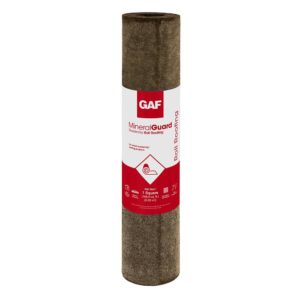
Roll roofing is generally more affordable than other roofing materials such as asphalt shingles or metal roofing. However, it may not offer the same level of longevity or aesthetic options as some of the higher-end roofing materials.
6. Can I walk on roll roofing?
While roll roofing is durable, it is not designed to withstand foot traffic. Walking on roll roofing can potentially damage the material, leading to leaks or other issues. It’s best to avoid walking on roll roofing whenever possible.
Rolled roofing isn’t for everyone and every roof, so if you have questions concerning where and when to use rolled roofing, or if you just have questions in general, fill out the online contact form, and a trained representative will help answer any questions you have concerning rolled roofing. You can schedule a consultation by calling 856-264-9093.

